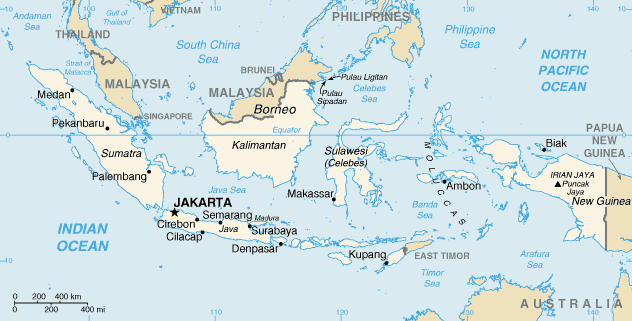Author’s Note: This is a series of selected highlights from two years (1986-88) of budget travel through 18 countries and a half-dozen US States – hosted all along the way by national and local YMCAs – from Samoa, Fiji, New Zealand, Australia, and Papua New Guinea, to Indonesia, Singapore, Malaysia, Thailand, Burma, The Philippines, Hong Kong, China, Macau,Taiwan, Korea, Japan, and back to the USA.

As the New Year began, I drifted north along the timeless, castaway beaches and quiet island hideaways of southern Thailand — waking up each day by the sea with the early morning sunlight filtering through the bamboo slats of my bungalow, and shimmering on the water under wide blue skies.
Traveling north from Bangkok, I made my way through the northeast and finally to the northern city of Chiang Mai where the YMCA put me to work for a few months teaching swimming at their new youth camp in the nearby town of Lampun.
It was absolutely wonderful to stay put for a while and become part of a community. Welcomed by many new friends at the YMCA and in town, and living practically for free in a stately old teak wood house considered by the locals to be haunted with the spirits of two brothers who had killed each other there some years ago — and therefore impossible to rent to anyone but ‘naive’ foreigners.
“Songkran Festival” – Thai New Year — the time for cleansing and starting anew. In April, at the height of the hot season, everyone goes around dousing each other with water. It was actually pleasant to be constantly cooled off – drenched on the hot afternoons, and it involves everyone – you can’t escape it. You just have to surrender to the fun and festivity.

Trekking to remote ethic minority or “hill tribe” villages, women adorned in high, ornate silver conical headdresses greeted us with big, red betel-nut-stained smiles, black teeth, and warm, loving eyes — naked from the waist up, a babe at the breast and one or two others slung across the back. Our hostess emerged from the house, sweeping the dirt floor and wearing a skimpy black skirt. A number of younger women nearby were sewing handicrafts — all with heavy breasts ready for the multitude of kids in this tiny mountain village.
The men displayed predictable “back country” behavior — heavy drinking, smoking, domestic quarreling, and good laughter – amid the harsh reality of life in the hills. The tribal groups typically practiced slash and burn cultivation to eek out their one harvest of mountain rice per year, denuding the hills almost completely of trees and filling the air with choking smoke and ash — with powdery, dusty soil in the dry season and mudslide flooded landscapes in the rainy season.
In these remote villages, my limited Thai language was not much help, as most spoke only their tribal languages. My trekking guide ‘Lek’ led us through rice paddies and incredibly beautiful mountainous country to a Kwo Min Tang Chinese village settled by descendants of Chiang Kai Chek’s followers who never made it to Taiwan from China, but settled instead in this remote corner of northern Thailand – and still speak only Chinese.

Coming down out of the hills to a Lisu village, we took a bamboo raft down the Kok River to the Thai border village of Tha Ton. In one Lahu village, the rats had eaten all the grain leaving nothing to eat or plant. So, to bring in some cash, the villagers had begun hosting overnight village stays for travelers, which also included smoking opium.
The Lisu and Lahu tribes typically cultivated the opium and sold it to the Akha tribes who became dependent on the drug, often resisted sending their children to school, and were poorer and generally in more difficulty as a result. The tribal women typically carried the heaviest burden — tending the fields, looking after the kids, preparing food and other housework, while trying to keep the house from falling down as the men drifted away in opium induced stupors.
One of the most extensive opium-producing regions of the world, The Golden Triangle is situated at the confluence of the Mekong and Ruak rivers, spreading poppy fields across the mountains of three countries: Thailand, Burma and Laos. At the northern-most Thai border town of Mai Sai, I watched as Thai tourists eagerly crossed the Ruak River into Burma for bargains in the riverside markets. All other foreigners were permitted to walk freely along the bridge, but only as far as the border, where we peered from a distance into a country that mysteriously barred us from entry. That would have to wait for another trip.

The “long-tail” boat swept along the Mekong River to within spitting distance of Laos, and then back to Thailand where I enjoyed a refreshing swim and a good sleep – anesthetized by the sound of its flow past my riverside guesthouse.
As the late afternoon sun lit up the clouds over Doi Suthep, the mountain overlooking Chiang Mai, it was killing me to have to say goodbye. Nearly six months in Thailand. But I had stayed too long, and I didn’t want to leave my friends – so many friends. It would be easy to stay, having found some of what I was looking for. Soon, I would return.
Stay tuned for Asia-Pacific Tour: Burma (Myanmar), coming soon!
You can read more about Jim’s backstory, here and here.































